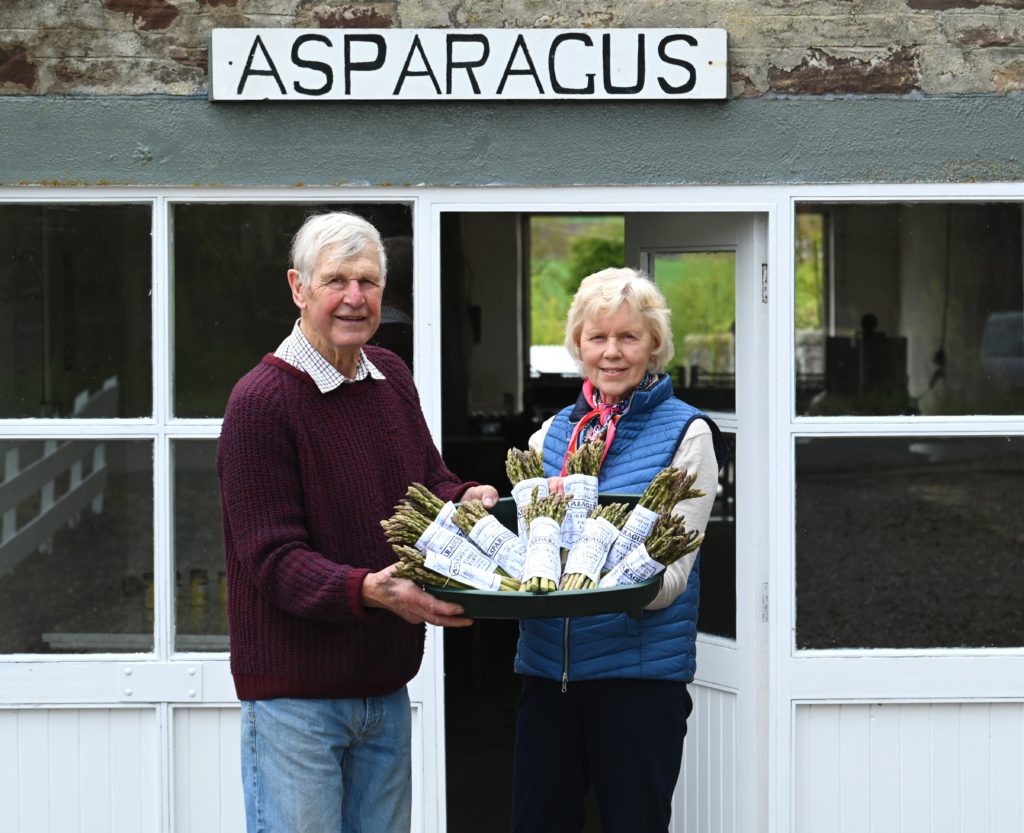Sandy Pattullo is patiently waiting for the Scottish asparagus season to get into full swing, "in May you think about asparagus and nothing else," he said.
He admits that although, "it is quite a thought, all those early starts, we are lucky to still be reasonably fit."
He turns eighty in July, and moved to Eassie Farm with his wife Heather in 1964 when they married.
During the six week season, picking begins at 7am until midday, then the spears are graded and bundled and dispatched.
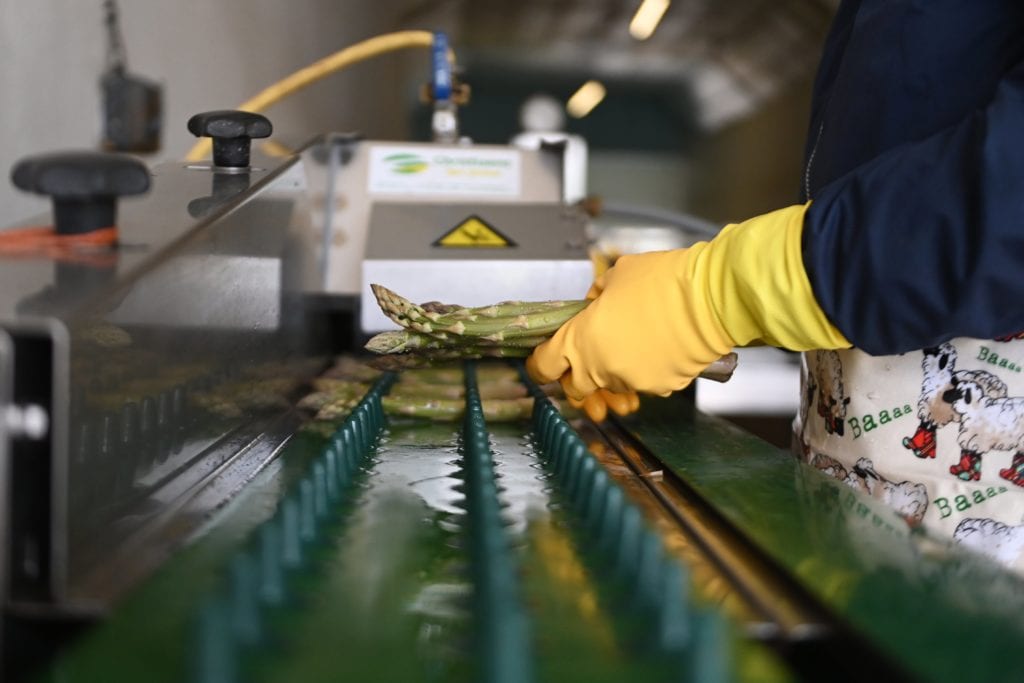
Finding pickers can be a problem but last year they were joined by a couple of furloughed chefs.
He said, "so it's a ragbag team. I quite enjoy picking myself if anyone wants a day off."
He explains they also grow more normal crops but over time saying, "we have just added asparagus and sea kale."
Eassie farm was previously owned by his elderly relative, he said, "cousin Liz as we called her, had a bit of style about her. She had a big garden and there was an asparagus bed in there."
The Pattullos had thought about growing asparagus commercially, but it wasn't until 1980's when they decided to dedicate a couple of acres.
Sandy said, "we now grow eight acres, which is just enough to meet our market.
"I've always been quite a keen gardener, I just like seeing things grow successfully."
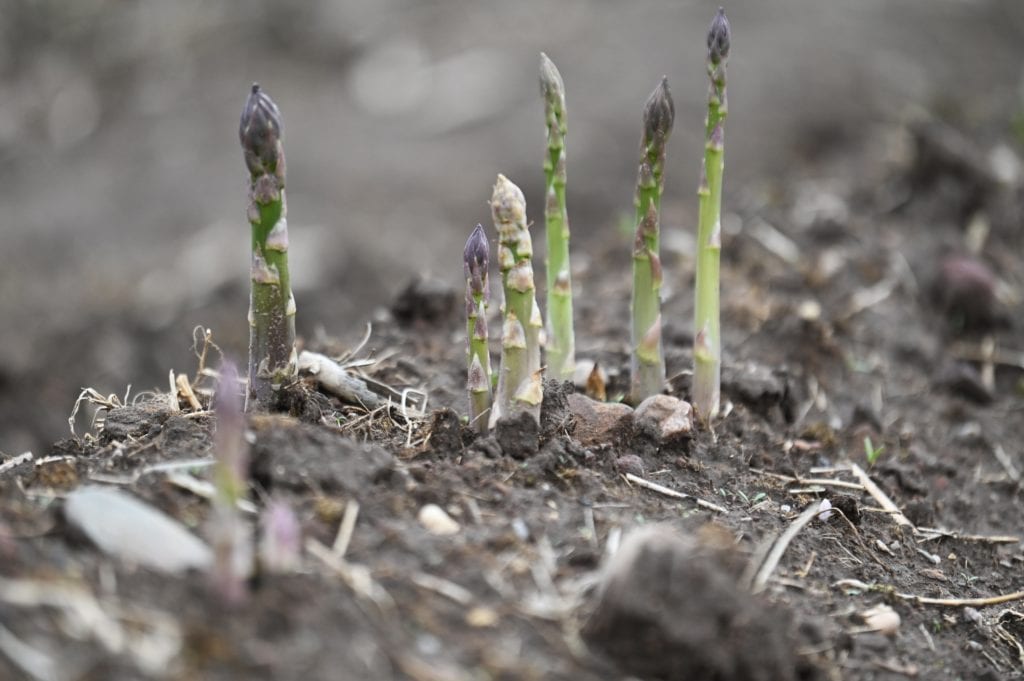
He is from a generation that enjoys 'growing your own' he said, "we enjoy the freshness of the food straight out of the garden, there is nothing like it."
Asparagus are grown from a tangle of roots known as a crown.
Sandy said "eventually they can grow to three metres square but we replace plants every six to eight years."
First you have to prepare the soil to ensure it is completely weed free.
The plants are placed, "in old money, 10 inches apart with 74 inches between rows," he said.
In winter the plants are dormant so the frost doesn't bother them, "but it is a big bother in early May when the spears are just coming through," he said.
The weather is critical as frost at the wrong time can be quite devastating to the crop, he said, "you can lose a whole week from just one night's frost."
"You can't do much about it, but in the thirty odd years we have grown it we have only had four occasions when the frost has been hard enough to do real damage," he said.
On the whole, he said, "it has been a jolly successful crop but you get good years, and bad years."
He explains another critical time is in July and August, he said, "if you get a fine summer and the sun shines for two months you can be sure you will get a jolly good harvest the next year."
At that point, the fern stage, they plants are shoving the carbohydrates back inside to grow well for the following year.
He recalls, "one year we cut for longer (eight weeks) but we soon decided that we don't do that again, now we only cut for 40 days."
The crop is good for wildlife, partridges in particular love the cover it provides.
He adds, "but hares love it and will eat it to the ground, so we have to make sure we fence any new plants."
Their seasonal Scottish asparagus has always been in demand,as Sandy says "We have never had a problem of getting rid of it."
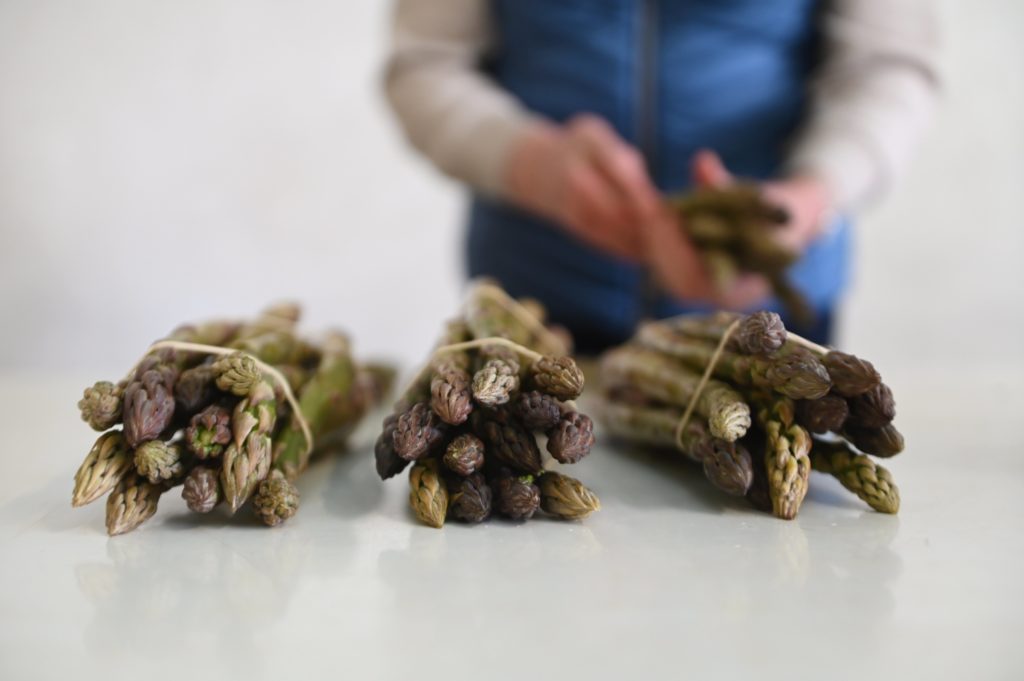
"The Kinloch house and Willie Little's of Little's Restaurant, Blairgowrie always took a huge amount."
In the early days they even supplied The River Café in London, Rose Gray, and her business partner Ruth Rogers had tried their produce at Valvona & Crolla's in Edinburgh, and he said, "the pair thought our asparagus looked great."
He is proud their produce is used at high end establishments, "we very much liked it ourselves, that was one of the reasons we grew it but it is always great to see a mention of Pattullo Asparagus, in a food review."
Sandy comes from a long line of farmers, he said, "my great, great, grandfather, farmed at Baldragon near Dundee and he had seven sons who all went into farming, so all big families.
"My grandfather always said he had 96 first cousins."
His father also farmed at Langlogie nearby, "so there was no option but to go into farming but I was fairly keen."
He was born in 1941, and has witnessed great change within farming, he said "horses were being replaced by tractors, and all the machinery like combines suddenly appeared."
He explained farming was, "a different scene altogether and there were big squads so it was very much more sociable job."
He was also keen on sport, he played cricket for the village team in Meigle.
He said, "the village has had a club since the 1870's and my father captained them in the 1920's so we have a long family connection."
He also started playing rugby and the love of the game led him to Heather, he said "we met at a party after watching one international game in Edinburgh."
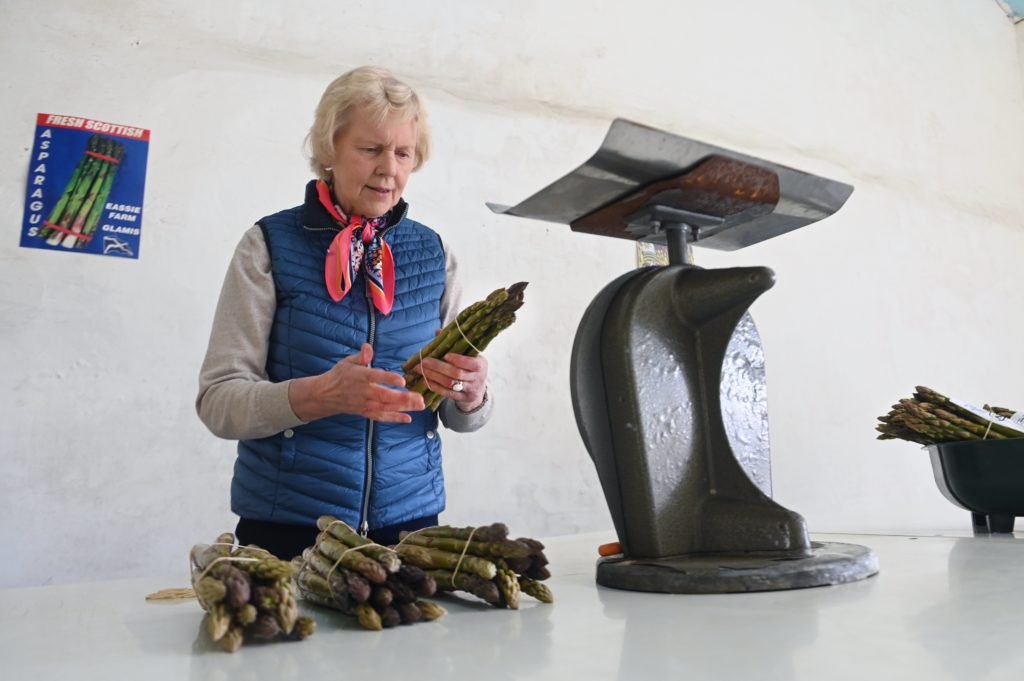
Heather comes from Broughty Ferry and her family were involved in the Jute industry, so farming was all new to her.
Sandy said, "luckily she has fitted in very well, perfectly in fact. She is a major part of the operation her department is quality control."
They sell wholesale and direct from their small asparagus shop on the farm.
The couple had always looked to branch out into other crops.
He said once, "one of the hotels we supplied said, 'gosh you should be growing sea kale."
He'd never heard of it, but looked it up and wasn't initially impressed. It cropped in the winter so he thought it would be cold and wet.
While waiting in the doctors surgery, he spotted an interesting article in a magazine about it so he admits, "I tore it out and stuck it in my pocket."
He tells us that sea kale is similar to asparagus, and was known as winter asparagus and grown in big houses in 19th century, but that it fell out of use.
It is a brassica (Crambe maritim) and can be found around the coastline of Europe, the Baltic and Black Sea.
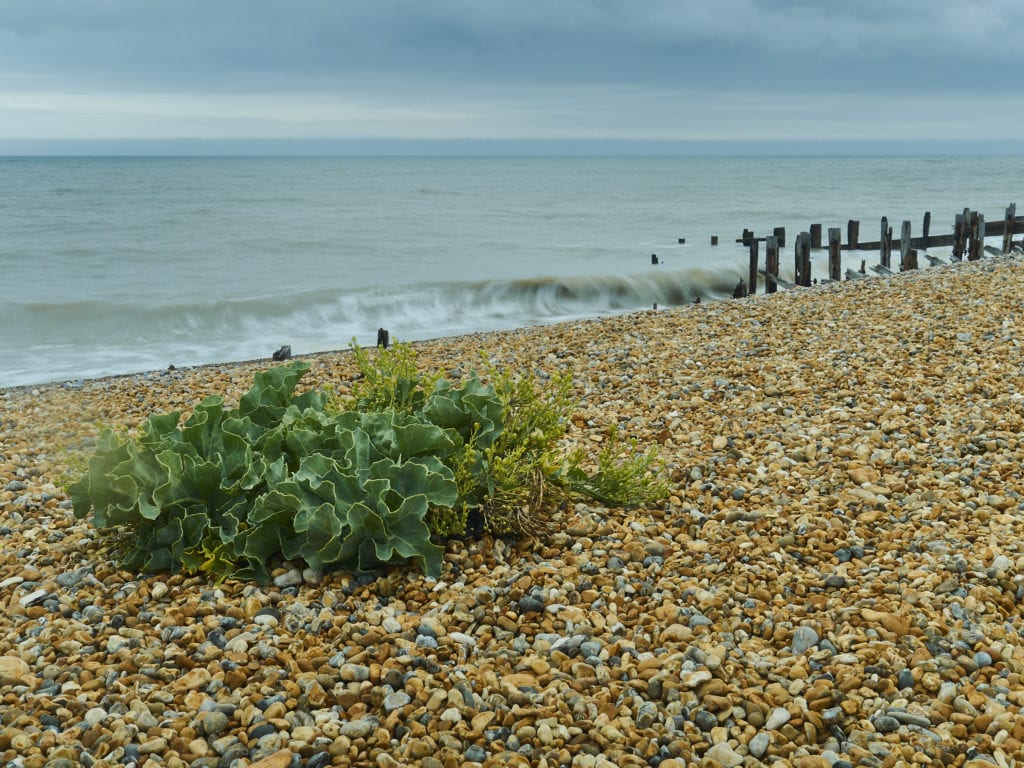
It is protected under the Wildlife & Countryside Act (1981) and must not be picked without permission from the landowner.
It is an old fashioned heritage vegetable, high in vitamin C that was used by Romans to ward off scurvy.
The article he tore out mentioned a Mr Paske in Lincolnshire so he contacted what turned out to be the sea kale king of East Anglia.
Sandy said, "I got my first thongs or root cuttings from him and we started from there."
The plants are grown in around a hectare of land.
It grows outside all summer before the plant is uprooted in October and placed into peat into complete darkness in a frost proof and insulated steading.
They just add water and heat over winter, and it is ready to cut in early January until the middle of April just in time for the asparagus season to restart.
The plants are then replanted outside to recover.
He said when we dig them up, "we have to be careful not to break the roots as we need to know which way the roots are growing because it won't grow upside down."
The roots or thongs are then cut into new three inch lengths to grow on for the following season.
They employ a small team of regular workers who are very experienced in preparing them.
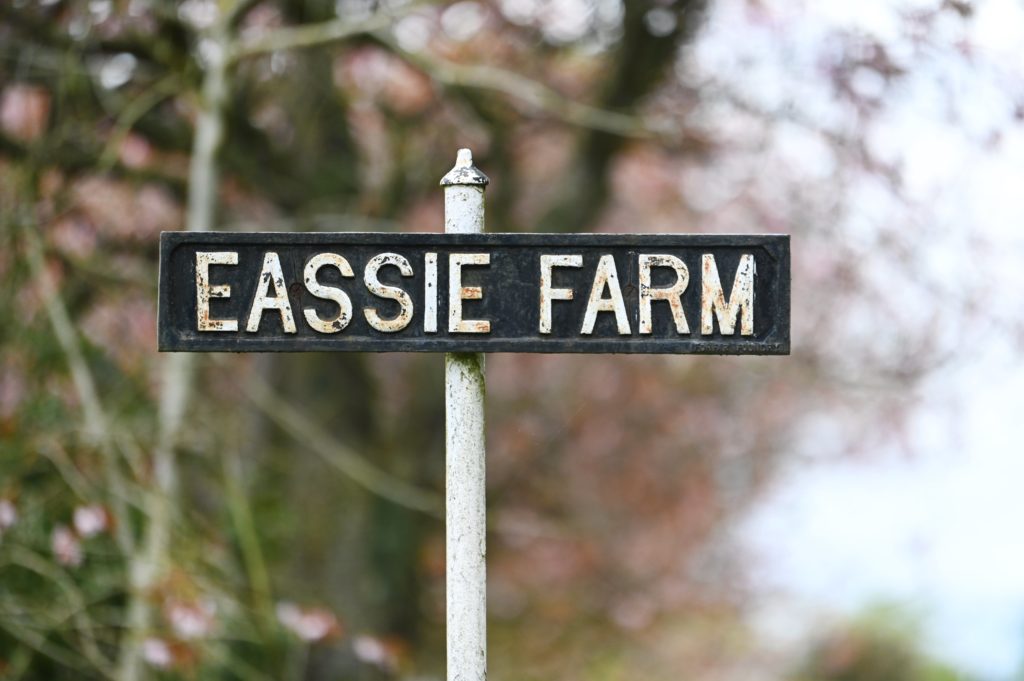
He said, "in some years it has done better than asparagus."
They also sell the excess sea kale thongs via Marshalls mail order because he said, "that makes a huge difference to the financial return."
When it is ready to harvest it looks a bit like celery, pale green or ivory tinged because it is grown in the dark.
There is a little leaf at the end that is sweet and succulent.
In the early years news of his unusual crop soon spread amongst the chefs via word of mouth.
He said, "I was talking to a wholesaler in London about sea kale he said 'I've been hearing the Pattullo name all over London today.' All the chefs were looking for it."
One fan was Rowley Leigh, a well known London chef from about 30 years ago. He was so interested he got on a train to visit.
Other fans include Jonathan Self, (brother of Will) who owned a big restaurant and The River Café who took two boxes every week during the season, today Scott Smith at Fhior and Tom Kitchin are huge fans.
Tom Kitchin even listed it as one his top five ingredients, Sandy said, "so you couldn't get better than that."
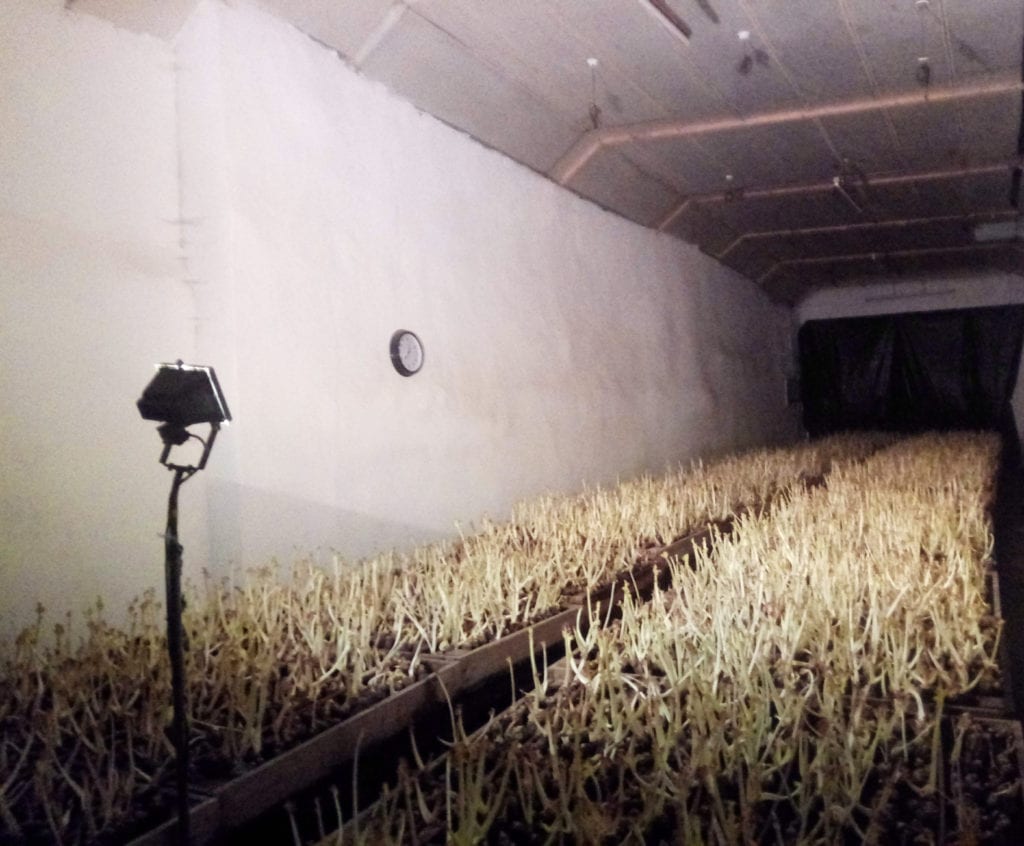
This years sea kale harvest was hampered by hospitality being closed.
Sandy said, "unprecedented times so sometimes we had to cut it and then compost it."
"We have often thought we should be looking for another strange plant but for just now we are quite happy with sea kale and asparagus."
Finally he tells us that he is not ready to retire just yet, "but I'm happy to keep going for as long as I can. I still thoroughly enjoy it."
